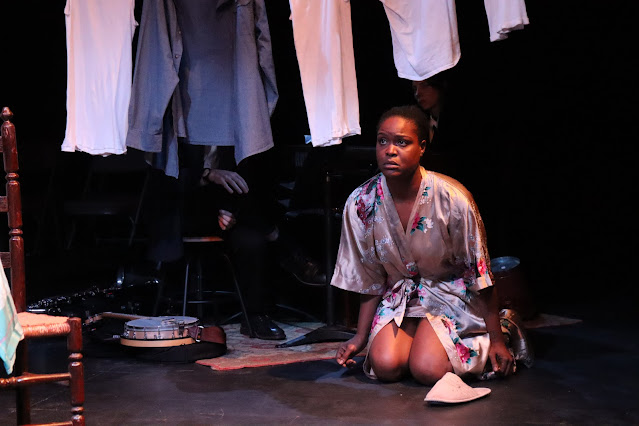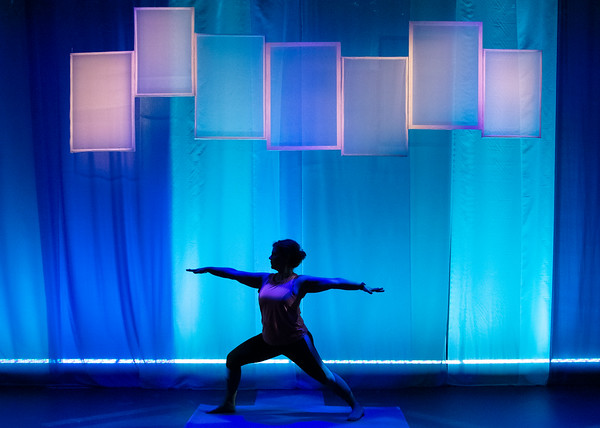Review: "Birthday in the Bronx" Charts a Rocky Road
Birthday in the Bronx
Written by Paul Hufker
Directed by Michaela Escarcega
Presented by and at The Tank
312 W. 36th. St., 1st Floor, Manhattan, NYC
February 20-March 18, 2020
 |
| Suzelle Palacios. Photo by Mari Uchida |
Raquel's nickname, Rocky, is tied up in her athletic performance as her school's star field hockey player, a role that she looks to as her only way out of her neighborhood: Rocky wants to be a politician, but, as she says, no one sends scouts to look for future political figures. When one such scout does in fact offer Rocky an athletic scholarship to a wealthy, predominantly white high school, she accepts. She also shortly accepts a symbolically weighted new, white field hockey stick. Complications arise at her new school over the course of her transition, but Rocky also faces resistance from her mother (Milagros Colón), who speaks almost exclusively Spanish (as is the case with many children of immigrants, Rocky's own Spanish is not very good), and from her own guilty feeling that ending up anywhere but the Bronx would constitute a betrayal of the mother who raised her alone.

Suzelle Palacios and Milagros Colón (rear). Photo by Mari Uchida
The upper part of the well designed set (balanced by an area of grass on the floor in front of the stage) serves as an announcers' booth for two white men, Labarrera (Evans Formica) and Kayster (Sid Ross), who, when the play opens, are covering one of Rocky's games in the Bronx for the radio. While sports radio covering high school girls' field hockey may seem a little unusual, Birthday in the Bronx starts out realistically enough that one is tempted to just accept it as a convenient device—the men comment, for example, on the state of the more-dead-than-alive field, a state which points to funding inequalities. However, as the production proceeds, it becomes clear that the play is infused with more than a touch of surrealism, heightened at key times by the sound design. The lines of reality seem to get a little lost regarding the model town of Kayville, a symbol, in part, of white political dominance that dovetails with the repetition in different contexts of the word mayor, for instance; the moments when Rocky's mother or brother hit her are extremely stylized; and the interchangeable white girls (Sigrid Wise) at Rocky's new school sometimes speak in absurdist strings of signifiers of whiteness. The production also incorporates a trio of video screens showing at intervals such images as close-ups of parts of a white female face or blond hair and clips from interviews with the playwright or his partner, their faces out of frame. And there is a dash of puppetry, as Rocky takes in a lamb that may be the same one that Kayster describes seeing discarded by a Bronx butcher. The lamb itself works as a complex symbol, echoing Rocky, her relationship with her mother, a version of her aspirations, and a focal point for not only Rocky's empathy (and her schoolmates' lack of it) but also for the increasing empathy and internal change of another character. 
 |
| Sigrid Wise and Suzelle Palacios. Photo by Mari Uchida |
The racist coach (how he talks about and to Rocky highlights how she is seen only in terms of her body and gestures to the experiences of many athletes of color of either gender) wants her to embrace "venom," and the doctor advises using her cast as a club. While turning a wound into a weapon might seem like good advice, it runs counter to the greater embrace of empathy towards which the play as a whole bends. Straddling the personal, social, and meta and outward, and never going next quite where one expects, Birthday in the Bronx gives audiences a lot to unwrap.
-John R. Ziegler and Leah Richards



Comments
Post a Comment